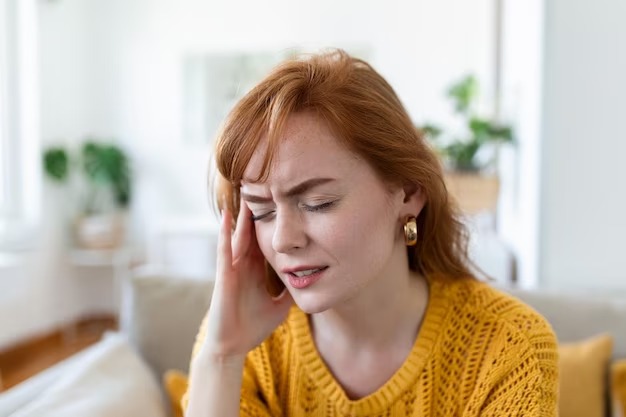Headaches can differ significantly in a number of ways, including :
- Intensity
- Location
- Frequency
- Cause

Primary Headaches
When the headache is the major issue, it is said to be primary. It is not a sign of an illness or other issue underneath. Primary headaches are not harmful, despite the fact that the agony they cause can be incapacitating. Although the brain cannot sense pain, the discomfort associated with primary headaches is caused by inflammation in and around the neck and head that affects pain-sensitive body regions, such as :
- Nerves
- Blood vessels
- Muscles
Primary headaches fall into a number of different groups. Primary headaches can come in a variety of common forms, including :
1. Migraine headache:- Like diabetes or asthma, migraine is a hereditary, chronic disease; it is not a psychological or social issue. Although there is presently no treatment for migraines, we are becoming better at treating the condition, much like with other chronic illnesses. This is taking action to determine the factors that cause headaches, changing one’s lifestyle to avoid them, and using drugs and other therapy techniques to treat headaches when they do occur.
Just a small percentage of patients identify the source of their headaches. The vast majority of migraine sufferers tend to benefit from a mix of little changes, such as changing sleep, eating, and exercise routines or avoiding certain partial triggers. Migraines change as they go through life stages, and what works at one point may not work at another.
2. Tension headache:- Tension headaches are probably the second most common type of headache after migraines. It is often called a “hatband” headache because it feels like a tight hat is on the back of the head, temples, and forehead. It tends to be like pressure at first and can last from hours to days. Tension-type headaches can coexist with migraines, where one can transform or trigger the other. Tension-type headaches often respond to physical therapy, relaxation therapy, and anti-inflammatory or muscle relaxants. It is a myth that tension headaches are less painful and less disabling than migraines.
3. Hypnic headache:- This is a rare type of headache that occurs between the ages of 40 and 80. It is unique in that it is a headache that occurs only at night and usually lasts 15 to 60 minutes. Headaches tend to occur at the same time every night, are usually global (not just on one side), and are not associated with a runny nose, tearing, or other “cluster” characteristics. There are specific treatments that usually do not respond to common headache medications.
4. Cluster headache:- As compared to a migraine, a cluster headache is a form of headache that typically lasts between 20 minutes and two hours. It is always on one side and accompanied by signs like one-sided stuffiness of the nose, tears, enlarging of the pupil, or drooping eyelids.
The headaches often start out happening many to many times a day for a few days to a few weeks, then they stop happening for a while, generally for a few weeks to months.

Secondary Headaches
Another disorder that affects the neck and head’s pain-sensitive regions might result in a secondary headache. Although secondary headaches are uncommon, they can be far more severe than original headaches. Secondary headaches might be an indicator of one of the following conditions :
- Brain tumors
- Aneurysm
- Meningitis
- Neck or brain injury
Secondary headaches usually start out of nowhere and are excruciating.
To get rid of your headache visit Specialty Care Clinics, we offer quality pain management.
